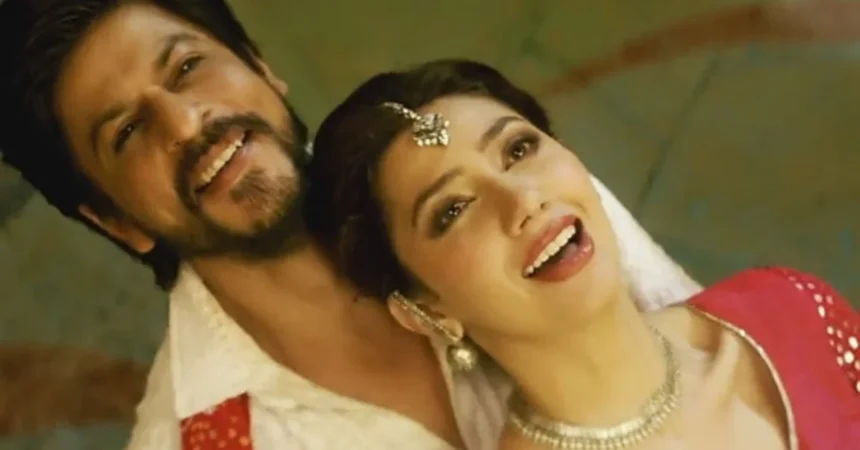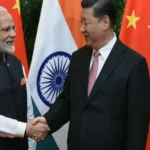In the vibrant landscape of Bollywood, casting decisions can shape not only a film’s narrative but also the careers of actors involved. The journey of Mahira Khan in the 2017 film Raees is a prime example of how personal recommendations and strategic choices can lead to remarkable opportunities. Directed by Rahul Dholakia and starring Shah Rukh Khan, Raees was a significant film that not only highlighted the struggles of a bootlegger but also showcased the chemistry between its lead actors.
The character of Aasiya:
Portrayed by Mahira Khan, was crucial to the emotional depth of the film. Dholakia recently shed light on the process of casting Mahira during an interview with casting director Mukesh Chhabra for Mashable India. He revealed that they needed an actress who could convincingly embody the character’s innocence while also speaking Hindi fluently, ideally with an Urdu accent to fit the film’s setting in the 1980s.
Dholakia explained that the filmmakers sought an actress in her 30s to match the age of Shah Rukh Khan’s character. The casting choices faced challenges as they needed a co-star who could engage the audience alongside the superstar. “Shah Rukh Khan cannot romance an Alia Bhatt,” Dholakia noted, highlighting the importance of age dynamics in casting.
Initially, several top actresses were on the radar for the role. Names like Kareena Kapoor, Deepika Padukone, and Anushka Sharma were considered, but many turned down the role either due to its limited scope or because their fees exceeded the film’s budget. “We had a few top names in mind, but none of them seemed to fit perfectly,” Dholakia explained. This left the casting team in search of fresh talent that could fulfill their requirements.
As the search continued, a breakthrough came from an unexpected source. Dholakia revealed that both Gauri Khan’s mother and his own mother had seen Mahira Khan in a Pakistani television drama and were impressed by her performance. They encouraged Dholakia to consider Mahira for the role, saying, “Yeh ladki achi hai,” which translates to “This girl is really good.”
This familial recommendation played a pivotal role in Mahira’s casting.
Dholakia promptly contacted casting director Honey Trehan, who confirmed that Mahira was already in Mumbai for promotional work. Trehan arranged an audition for her, and after watching her perform, Dholakia felt an immediate connection. “After the audition, I declared, ‘I have found my Aasiya,’” he stated, underscoring the importance of that moment in the casting process.
Mahira Khan had established herself as a prominent actress in Pakistan, particularly known for her role in the acclaimed drama Humsafar. However, she was unaware of the scale of the opportunity when she received the call for the audition. Speaking at the Faiz International Festival in 2016, Mahira recalled receiving a cryptic message indicating she should “pick up” a big film opportunity. Initially puzzled, she soon learned that it was a project with Excel Entertainment, a renowned production company known for hit films.
Her excitement escalated when she discovered that the film featured Shah Rukh Khan as her co-star. “I was just excited to be part of an Excel film, but when they told me I was playing the lead opposite Shah Rukh Khan, I was over the moon,” she shared, illustrating the thrill of landing such a coveted role.
The casting of Mahira Khan proved to be a significant moment in both her career and the film’s narrative. Her portrayal of Aasiya resonated with audiences, showcasing her ability to stand alongside an established superstar. The film’s narrative centered on the rise of a bootlegger, but it was Mahira’s character that added emotional resonance, providing a counterbalance to Shah Rukh Khan’s complex character.
Raees achieved remarkable success at the box office, and Mahira’s performance was praised by both critics and audiences. The chemistry between Mahira and Shah Rukh Khan was a focal point of the film, enhancing the storytelling and drawing viewers into the narrative. Their relationship in the film was not only a romantic subplot but also a means of exploring deeper themes of loyalty, sacrifice, and moral ambiguity.
Dholakia’s insights into the casting process also reflect broader trends within the film industry, particularly the significance of personal connections. In a competitive environment where numerous actors vie for roles, recommendations from trusted sources can significantly influence casting decisions. Mahira’s casting journey serves as a testament to how personal relationships can open doors for talent that may otherwise go unnoticed.
Moreover, Mahira Khan’s successful transition from Pakistani television to Bollywood serves as a beacon of hope for other actors aspiring to cross over into the Indian film industry. Her journey illustrates that talent, when recognized, can transcend borders and cultures. Mahira’s success in Raees has since paved the way for other Pakistani actors to explore opportunities in Bollywood, fostering a spirit of collaboration between the two film industries.
The impact of Raees extends beyond its box office success.
The film has contributed to discussions about representation and diversity in Indian cinema. Mahira Khan’s presence in the film has opened avenues for more inclusive storytelling that reflects a broader spectrum of experiences and narratives. As Bollywood continues to evolve, the inclusion of actors from diverse backgrounds will enrich the cinematic landscape.
Reflecting on the film’s success: Dholakia expressed satisfaction with the casting choices and the overall direction of the film. He acknowledged that the chemistry between the actors played a crucial role in the film’s reception. “Finding the right actors made all the difference in bringing the story to life,” he stated, emphasizing the collaborative effort involved in filmmaking.
Mahira’s journey in Raees is not just a story of casting; it symbolizes the potential for talent to shine through hard work and determination. Her experience serves as inspiration for aspiring actors navigating the complexities of the entertainment industry. The film industry is a dynamic space where opportunities can arise unexpectedly, and Mahira’s success reinforces the importance of seizing those moments.
Film industry continues to evolve:
The significance of personal recommendations and connections will likely remain. The willingness of filmmakers to explore diverse talent pools can lead to innovative storytelling that captivates audiences. Mahira’s casting story serves as a reminder that sometimes the best opportunities come from unexpected sources.
The casting of Mahira Khan in Raees exemplifies how the film industry can foster talent across borders. It opens up discussions about cultural exchange and collaboration between Indian and Pakistani cinema, potentially leading to richer narratives that resonate with a global audience. The cross-cultural dialogue initiated by Mahira’s casting encourages further collaborations that can explore shared histories and experiences.
Looking forward, Mahira Khan’s journey is just beginning. With her talent and determination, she is poised for continued success in both Bollywood and beyond. Her experiences highlight the shifting dynamics of the film industry, where inclusivity and representation are increasingly prioritized. The potential for diverse voices to contribute to the narrative fabric of cinema is vast, and Mahira’s success story is a testament to that.
As the film industry embraces a more inclusive approach to casting, audiences can anticipate a broader range of stories that reflect the complexities of human experience. The story of Mahira Khan in Raees serves as an encouraging narrative for future generations of actors and filmmakers. It underscores the idea that talent knows no boundaries and that opportunities can emerge from unexpected places.
The journey of Mahira Khan’s casting in Raees illustrates the intricacies of the film industry and the importance of personal connections in shaping careers. Her success is not only a reflection of her talent but also a testament to the evolving landscape of Bollywood, where diverse voices are beginning to gain recognition. The film has not only entertained audiences but has also opened up discussions about representation, collaboration, and the power of storytelling in bridging cultural divides.







